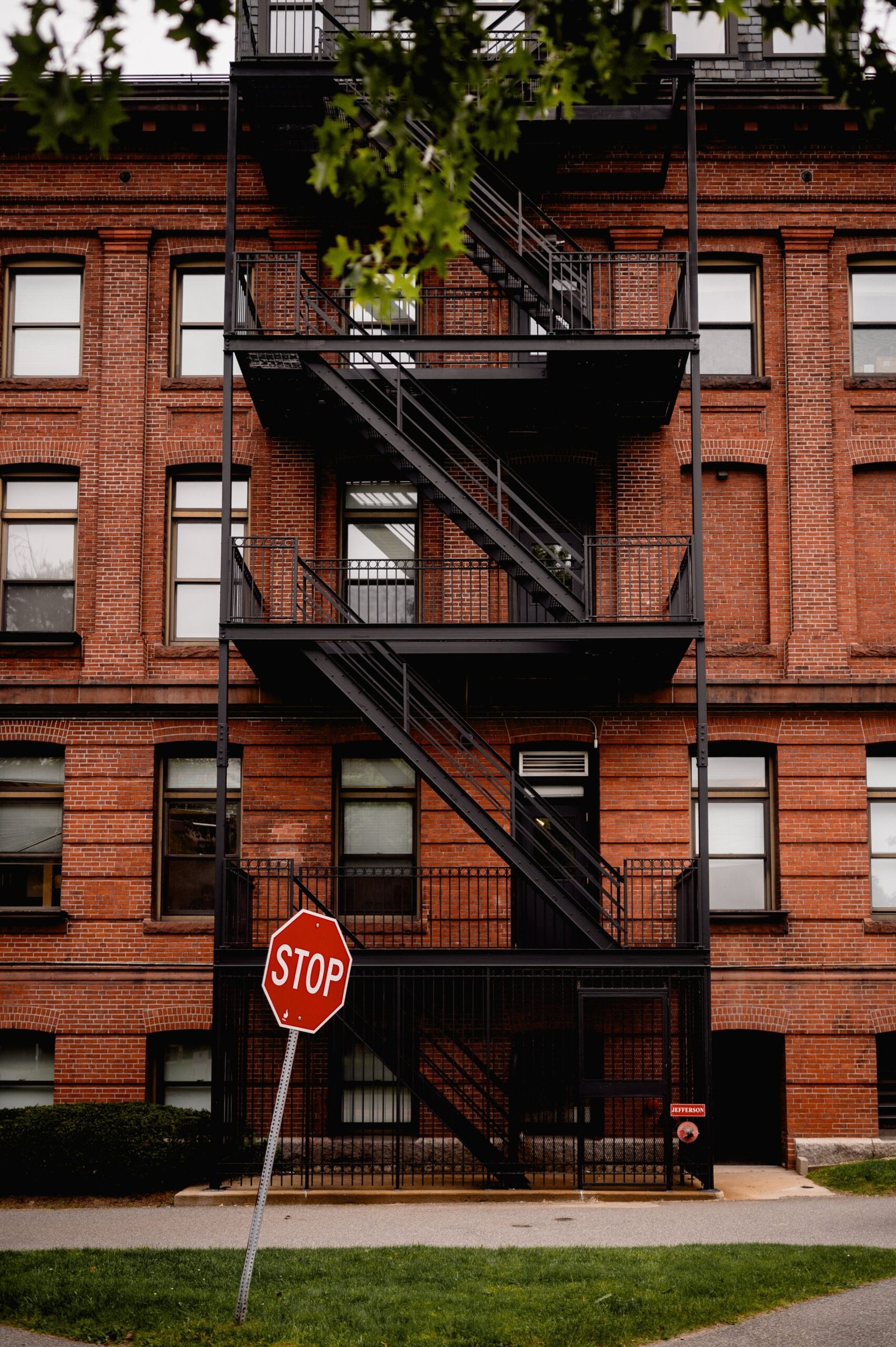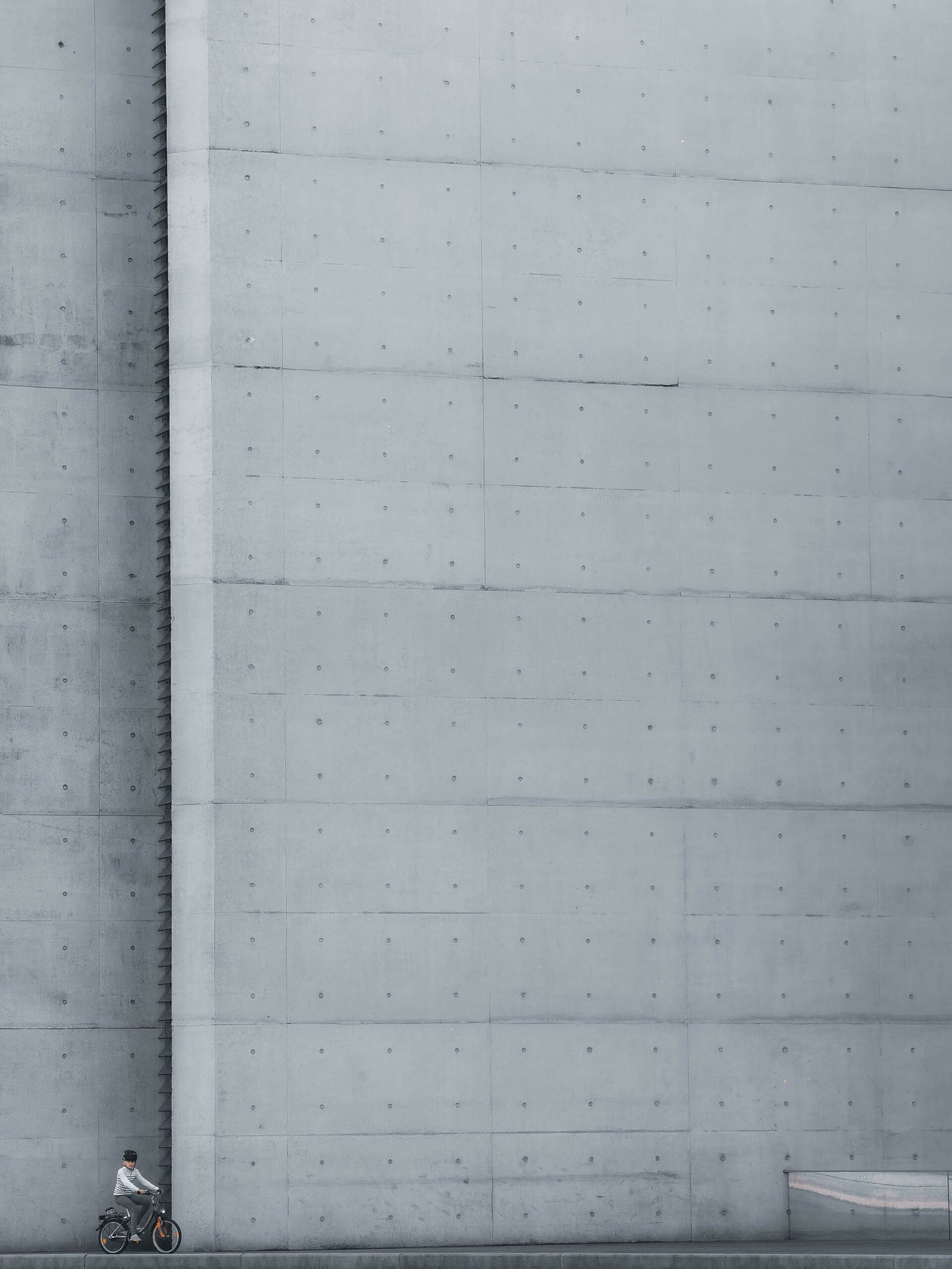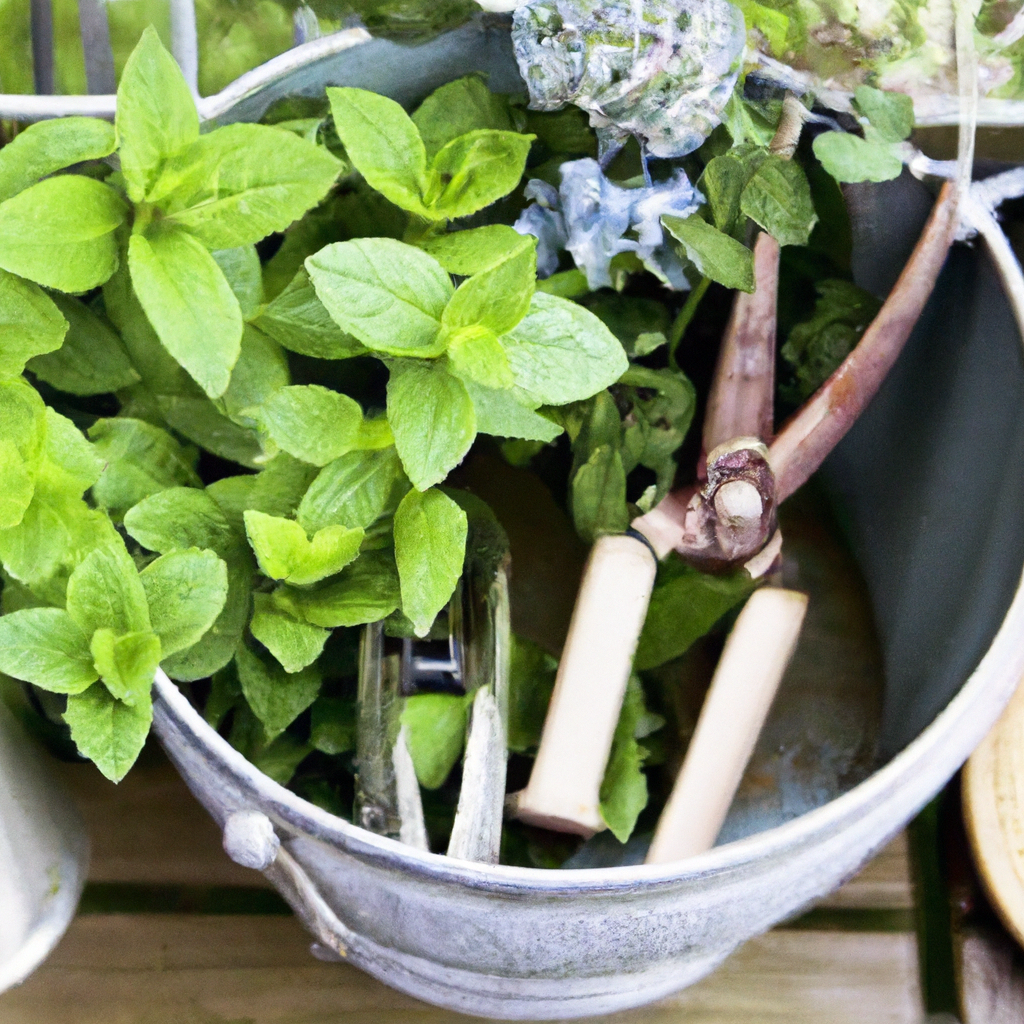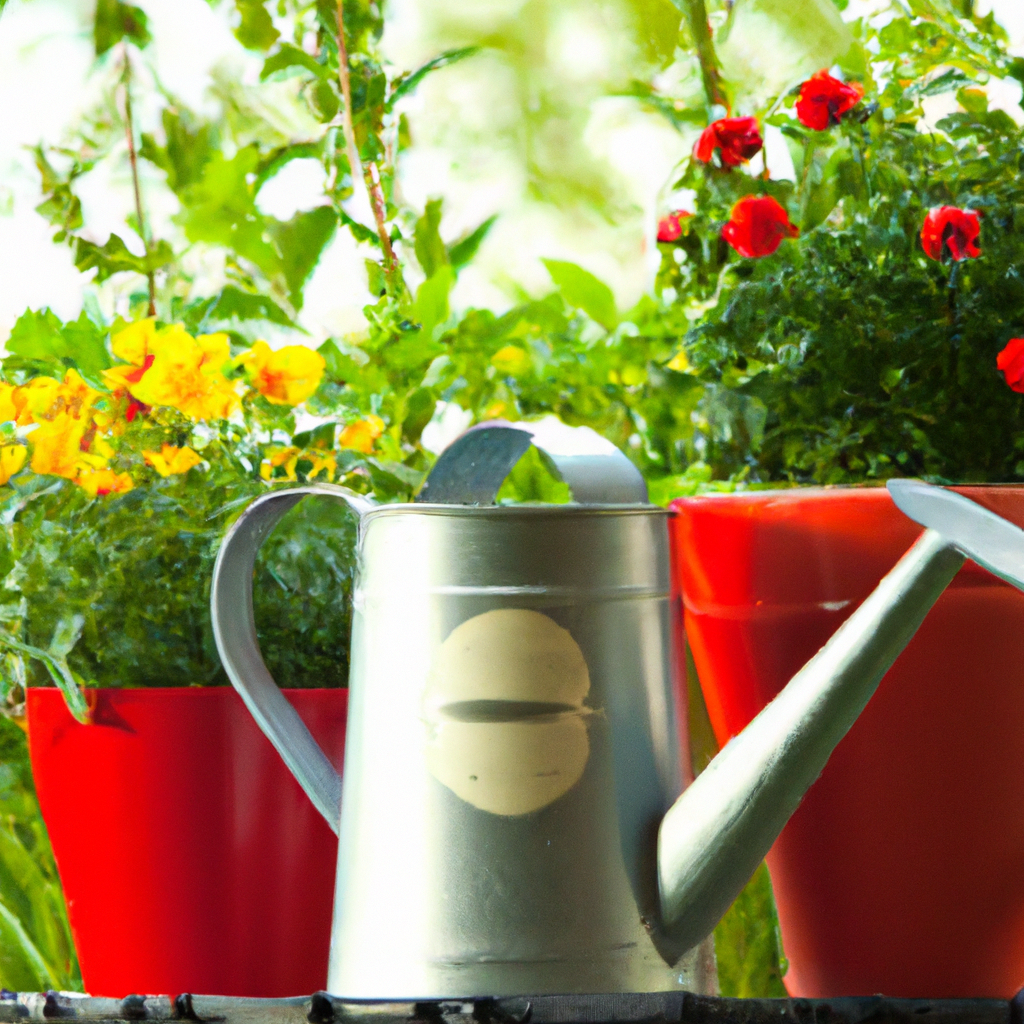
Are you interested in starting a garden but don’t have a lot of space? Look no further than container gardening! In this beginner’s guide, we will explore the world of container gardening and provide you with all the necessary tips and tricks to get started. Whether you have a small patio, balcony, or even just a sunny window sill, container gardening allows you to grow a variety of plants and flowers in limited spaces. From choosing the right containers to selecting the perfect plants, we’ve got you covered. Get ready to transform your space into a lush and vibrant garden oasis with our beginner’s guide to container gardening.

Choosing the Right Containers
When it comes to container gardening, choosing the right containers is crucial for the success of your plants. There are a few factors to consider when selecting containers: size, material, and drainage.
Size
The size of the container will largely depend on the type of plants you plan to grow. For large plants or plants that require a deep root system, opt for larger containers to accommodate their growth. Smaller plants, on the other hand, can thrive in smaller containers. Keep in mind that larger containers generally retain moisture better and provide more stability to prevent plants from tipping over.
Material
Containers come in a variety of materials, each with its own advantages and disadvantages. Common materials include plastic, ceramic, terracotta, and wood. Plastic containers are lightweight, durable, and affordable. Ceramic and terracotta containers are aesthetically pleasing but tend to be heavier and can crack in freezing temperatures. Wooden containers may provide a more natural look but can deteriorate over time. Consider the specific needs of your plants and your personal preferences when choosing the material of your containers.
Drainage
Proper drainage is crucial for container gardening to prevent waterlogged soil, which can lead to root rot. Look for containers with drainage holes at the bottom. If your chosen container does not have drainage holes, make sure to drill some before planting. Additionally, consider placing a saucer beneath the containers to catch any excess water and prevent it from sitting in the bottom of the container.
Selecting the Right Plants
The success of your container garden heavily depends on choosing the right plants. Consider the sunlight requirements, space requirements, and watering needs of the plants you plan to grow.
Sunlight Requirements
Different plants have varying sunlight requirements, ranging from full sun to shade. Determine the amount of sunlight your container garden receives throughout the day and choose plants accordingly. Sun-loving plants will thrive in direct sunlight for at least 6 hours a day, while shade-loving plants prefer filtered light or indirect sunlight.
Space Requirements
Consider the size and growth habit of the plants to ensure they have enough space to grow. Avoid overcrowding the containers, as this can hinder the growth and development of your plants. Read the labels or do some research on the specific space requirements for each plant you plan to include in your container garden.
Watering Needs
Different plants have different watering needs, so it’s important to choose plants with similar watering requirements. Some plants prefer consistently moist soil, while others need their soil to dry out between waterings. Matching the watering needs of your plants will make it easier to establish a watering routine and avoid over or under-watering.
Preparing the Soil
Great container gardens start with good soil. While you may opt for pre-packaged potting mixes, a little extra effort in preparing the soil can go a long way in ensuring the health and vitality of your plants.
Quality Soil Mix
Choose a high-quality potting mix specifically formulated for container gardening. These mixes are designed to provide excellent drainage and retain moisture, both crucial for container plants. Avoid using garden soil as it can become compacted in containers, leading to poor drainage and root health.
Adding Organic Matter
Enhance the quality of your soil by adding organic matter such as compost or well-rotted manure. Organic matter improves soil structure, increases nutrient availability, and boosts microbial activity. Mix in a generous amount of organic matter to your potting mix to create a nutrient-rich environment for your plants to thrive.
Fertilizer
Container plants often need additional nutrients as they rely on the limited resources within the containers. Use a slow-release fertilizer specifically designed for container plants to provide a steady supply of nutrients over time. Alternatively, you can use water-soluble fertilizers, applying them every few weeks during the growing season. Follow the recommended application rates and frequency specified on the fertilizer packaging for best results.
Planting Techniques
Proper planting techniques are essential to ensure the healthy establishment of your container plants. Follow these guidelines to give your plants the best start.
Proper Depth
When planting container plants, ensure that you place them at the appropriate depth. Avoid planting too shallow, as it can result in poor root development and instability. On the other hand, planting too deep can suffocate the roots and hinder growth. Aim to plant your container plants at the same depth they were previously growing, using the existing soil line on the plant stem as a guide.
Spacing
Proper spacing is crucial to prevent overcrowding and provide enough room for each plant to grow. Consider the mature size and growth habit of the plants you are planting and leave enough space between each plant. This not only helps to prevent competition for resources but also allows for proper air circulation, reducing the risk of diseases.
Transplanting Seedlings
If starting plants from seeds, it is important to transplant the seedlings into larger containers once they have developed a few leaves and a strong root system. Gently remove the seedlings from their seed tray or starter pot, being careful not to damage the roots. Plant them at the appropriate depth in the new container, ensuring the soil is firm around the roots. Transplanting seedlings allows them to access more nutrients and space, encouraging healthy growth.

Watering Tips
Proper watering is crucial for the health and vitality of your container plants. Follow these watering tips to ensure your plants receive the right amount of moisture.
Frequency
The frequency of watering will depend on various factors such as the type of plants, size of containers, and environmental conditions. Check the moisture level of the soil regularly by inserting your finger about an inch deep. If the soil feels dry, it is time to water. Avoid letting the soil dry out completely, as this can stress your plants. Conversely, do not overwater, as it can lead to root rot and other issues.
Amount
Water your container plants thoroughly, ensuring the water reaches the root zone. Water until you see drainage coming out from the bottom of the containers, indicating that the soil is adequately saturated. Avoid shallow watering, as it encourages shallow root growth and makes plants more susceptible to drought stress.
Watering Techniques
When watering, aim to water directly at the base of the plants, avoiding wetting the foliage. Wet foliage can lead to fungal diseases and encourage pest infestations. Consider using a watering can or a gentle spray nozzle on a hose to control the water flow and prevent excessive water force that can dislodge the soil or damage delicate plants.
Providing Adequate Sunlight
Proper sunlight is essential for the growth and development of your container plants. Follow these tips to provide adequate sunlight for your plants.
Ideal Sunlight Conditions
Most plants require at least 6 hours of direct sunlight per day to grow optimally. Place your containers in an area that receives adequate sunlight throughout the day. Pay attention to any obstructions, such as buildings or trees, that may cast shadows on your containers and reduce the amount of sunlight they receive. Optimal sunlight conditions will vary depending on the specific needs of your plants, so it’s important to research the sunlight requirements of each plant to ensure their success.
Positioning the Containers
Consider the orientation of your containers to maximize sunlight exposure. Place them in a way that allows them to receive the greatest amount of sunlight possible based on the sun’s path throughout the day. If you have limited sunlight in your outdoor space, consider placing your containers on a balcony or patio that receives more sunlight.
Using Grow Lights
If you have limited access to natural sunlight, consider using grow lights to supplement light for your container plants. LED or fluorescent grow lights can provide the necessary light spectrum for optimal plant growth. Position the grow lights above the containers at a distance recommended by the manufacturer and follow the recommended number of hours to leave the lights on each day.

Controlling Pests and Diseases
Pests and diseases can wreak havoc on your container garden if left unchecked. Here’s how to identify common pests, employ organic pest control methods, and prevent diseases.
Identifying Common Pests
Common pests that may attack your container plants include aphids, mealybugs, spider mites, and slugs. Keep an eye out for signs such as holes in leaves, wilting, yellowing, or distorted foliage. Inspect your plants regularly, especially the undersides of leaves where pests tend to hide, to catch any infestations early.
Organic Pest Control Methods
When dealing with pests, it’s best to opt for organic and environmentally friendly pest control methods. One option is to handpick larger pests such as slugs or caterpillars and remove them manually. You can also use insecticidal soaps or horticultural oils, which suffocate soft-bodied insects like aphids. Alternatively, attract beneficial insects such as ladybugs or lacewings to your container garden to naturally control pest populations.
Preventing Diseases
Preventing diseases is key to maintaining a healthy container garden. Practice good hygiene by regularly removing dead or diseased plant material to prevent the spread of diseases. Ensure proper air circulation around your plants by spacing them adequately and avoiding overcrowding. Water your plants at the base to minimize moisture on the foliage that can promote fungal diseases. Lastly, avoid overwatering, as it can create excessively wet conditions that are favorable for disease development.
Pruning and Deadheading
Pruning and deadheading are important maintenance tasks that help keep your container plants in optimal shape and promote healthy growth.
Maintaining Plant Shape
Regular pruning helps to maintain the desired shape and size of your plants. Trim any overgrown or leggy stems to encourage branching and create a more compact and bushy appearance. Remove any damaged or diseased branches promptly to prevent the spread of diseases. Additionally, prune back any dead or yellowing foliage to improve the overall appearance of your container plants.
Removing Spent Flowers
Deadheading, the removal of spent flowers, not only improves the aesthetic appeal of your container garden but also encourages continuous blooming. To deadhead, simply pinch or cut off the faded flowers, making sure to remove the entire flower head. This prevents the plant from producing seeds and directs its energy to producing more flowers. Regular deadheading can prolong the blooming period and keep your container garden looking vibrant.
Encouraging Growth
Pruning can also be used to encourage new growth and shape your plants. If you notice that your container plants are becoming leggy or bushy in one direction, consider pruning to promote balanced growth. Cut back the stems at the appropriate node or bud to stimulate new growth and encourage a more symmetrical appearance. Pruning before the growing season or during periods of active growth will yield the best results.

Nutrients and Fertilizers
Container plants rely on us to provide them with the necessary nutrients to thrive. Understanding plant nutrients, different types of fertilizers, and establishing a feeding schedule are crucial elements of successful container gardening.
Understanding Plant Nutrients
Plants require essential nutrients for healthy growth and development. The primary macronutrients needed by plants are nitrogen (N), phosphorus (P), and potassium (K), often referred to as NPK. Nitrogen promotes lush foliage growth, phosphorus aids in root development and flower production, while potassium strengthens overall plant health and increases disease resistance. Additionally, plants need secondary nutrients such as calcium, magnesium, and sulfur, as well as micronutrients like iron, manganese, and zinc, though in smaller quantities.
Different Types of Fertilizers
Fertilizers are available in various forms, including granular, liquid, and slow-release. Granular fertilizers are easy to apply, as they can be sprinkled on the soil surface and watered in. Liquid fertilizers are diluted in water and applied directly to the plants. Slow-release fertilizers are designed to gradually release nutrients over time, providing a steady supply of nutrients to your plants. Choose a fertilizer formulation that suits the needs of your plants and follow the recommended application rates.
Feeding Schedule
Establishing a feeding schedule is important to ensure your plants receive a consistent and appropriate supply of nutrients. Generally, container plants require more frequent feeding compared to plants in the ground, as their roots cannot access additional nutrients from the surrounding soil. Follow the instructions on your chosen fertilizer regarding the frequency of application, but as a general guideline, feed your container plants every 4-6 weeks during the growing season.
Overwintering Container Plants
If you live in an area with harsh winters, it’s important to prepare your container plants for the cold months ahead. Here’s how to choose winter-resistant plants, employ insulation techniques, and protect the roots during winter.
Choosing Winter-Resistant Plants
Not all container plants can withstand freezing temperatures, so it’s crucial to choose winter-resistant plants for the survival of your garden. Look for plants that are hardy in your specific zone and can tolerate the lowest temperatures expected in your area. Consider plants such as holly, wintergreen, or dwarf evergreens that are known for their ability to withstand winter conditions.
Insulation Techniques
Insulate your containers to protect the roots of your plants from freezing temperatures. Wrap the containers with burlap or bubble wrap to provide an extra layer of insulation. You can also move the containers to a sheltered location, such as a garage or covered patio, where they will receive some protection from the cold winds and extreme temperature fluctuations.
Protecting Roots
The roots of container plants are more vulnerable to freezing compared to plants in the ground. One way to protect the roots is by adding a layer of mulch to the surface of the containers. Mulch helps to regulate soil temperatures, protect against freezing, and retain moisture. Apply a thick layer of mulch, such as straw or wood chips, around the base of your plants to provide insulation during winter. Additionally, consider using container wraps or specialized root covers to further protect the roots from extreme cold.
By following these comprehensive container gardening tips, you’ll be well on your way to creating a successful and thriving container garden. Remember to choose the right containers, select suitable plants, prepare the soil properly, employ correct planting techniques, ensure adequate sunlight and watering, control pests and diseases, prune and deadhead, provide proper nutrients, and protect your plants during winter. Happy gardening!






